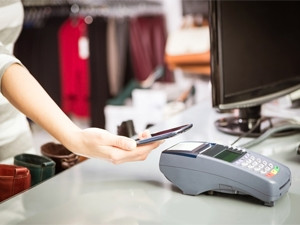
Near-field communication (NFC) - the short-range wireless technology that enables mobile devices in close proximity to swap data - is not off the cards, despite its seeming latency over the past few years.
Since the initial buzz in SA around NFC in 2011, the contactless technology has been quietly gathering steam in the background, with SA's banks and other invested entities looking at ways of successfully implementing it.
Last week, former Google SA head and Thumbzup founder Stafford Masie told ITWeb the next version of the Payment Pebble - a locally-developed mobile point-of-sale (POS) solution made famous by Absa - will support NFC. He says, while the technology is a "chicken and egg" scenario, it is important for Thumbzup to focus on it, because "it is coming".
Most card readers in SA are already geared for contactless communication; the functionality just needs to be switched on, says Masie. "We will create a large fabric for NFC acceptance." Masie believes a broader NFC ecosystem will be present in SA sooner, rather than later.
NFC can be put to use in a number of ways, including card emulation, reader mode and person-to-person mode. A mobile phone with NFC can behave like a contact-less card, read radio frequency identification tags for interactive advertising, and exchange information between devices and accessories.
Near-field communication has been punted by many analysts as the technology most likely to drive growth of mobile commerce.
Bank rollout
SA's banks back up the notion that NFC is on the cards - and on the roll.
SA's largest bank by customer number, Absa, says it recognises the strategic importance of NFC and contactless payments. The bank provides NFC acquiring services (tap points) to two transport networks in SA, namely ReaVaya (City of Johannesburg) and MyCiti (City of Cape Town).
Absa says it will continue to innovate in this space, specifically around contactless, low-value payments across multiple payment instruments - including cards, mobile phones and wearable technology and broad-based P2P payment capabilities like mobile wallets.
Similarly, Standard Bank, which has deployed the Muvo card in the city of Durban (allowing clients to make purchases and pay for public transport), is actively promoting NFC and contactless technology.
As per industry agreement, contactless payments are for amounts under R200. Standard Bank notes NFC is designed for small basket payments where customer convenience and merchant speed of receiving payment come together. Examples are quick service restaurants, coffee shops, low value retail baskets in express lanes and transport.
Through the use of payment scheme standards (MasterCard and Visa), Standard Bank has issued almost two million contactless cards, and has begun rolling out acceptance infrastructure on its POS estate.
Andrew Wilmot, head of card acquiring for Standard Bank in SA, says NFC is essential to displace cash with electronic payment methods. "By using the security of the chip and its ability to manage NFC, contactless is also the key to unlocking mobile payments."
Nedbank says it has been investing in NFC and contactless foundational capabilities, such as contactless cards for transport, host card emulation, Bluetooth low energy and tokenisation - all of which are in pilot phase.
"Although contactless has as yet not reached critical mass in SA, Nedbank is investing in both card and mobile contactless/NFC and we believe we will see this type of payment method becoming more common during 2015 and beyond."
Nedbank has prioritised merchant enablement, it says, and has already replaced 40% of its POS infrastructure with MasterCard and Visa certified contactless devices. Nedbank plans to selectively enable both client and merchant solutions this year.
Delaine Patrick, COO at First National Bank's credit card division, says the bank has started the process of incorporating the technology into its payment methods, but will only be in a position to formally announce new features once launched.
Pervasive points
Masie points out Australia - which he deems the world leader in terms of NFC and contactless payments - has a mature ecosystem, which includes contactless ATMs. World Wide Worx MD Arthur Goldstuck says SA should start seeing NFC to this degree becoming pervasive in SA in the next few years.
"Physical NFC infrastructure is relatively easy to roll out. It is becoming quite pervasive, so that we don't think twice about using it on, for example, both ReaVaya and the Gautrain. It can quickly be rolled out on taxis and general buses as well. The real challenge is not the physical infrastructure but the payment infrastructure."
Most higher-end phones also now have NFC and eventually all smartphones will have it, he adds. "With the roll-out of Apple Pay and Samsung Pay in the coming years, it will become commonly accepted by retailers as well. The key, however, remains the payment system itself; namely the interconnectivity between NFC devices, terminals and banks or payment services."
BMI-TechKnowledge director Brian Neilson says the fact that NFC is supported by Apple Pay and Google Wallet lends the technology "great momentum too".
For universal adoption in SA, he says, all players in the banking system and the retailing ecosystem would need to plan for NFC in a harmonised manner. Should this level of agreement be reached, the retailers would switch on the functionality, and the technology would go from strength to strength, says Neilson.
Share